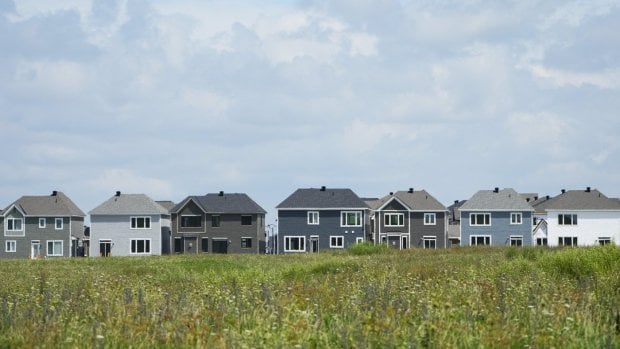July Home Sales Rise as Prices Approach Inflection Point

July home sales have shown a promising increase, with a 2% rise reported for previously owned homes compared to June, as the housing market begins to adjust to new dynamics. This uptick comes amid a notable evolution in home inventory levels, which reached 1.55 million units, an impressive 15.7% jump from last year. As home inventory levels rise, pressure on median home prices appears to be easing, hinting at a potential inflection point for the market. Notably, the median price of a home in July rose to $422,400, marking a record for this month and indicative of ongoing real estate market trends. With greater housing affordability resulting from wage growth outpacing home price increases, more buyers are entering the market, leading to a significant boost in overall sales activity.
In the realm of residential real estate, the surge in sales during July highlights a pivotal moment for the housing sector. The upward trend in transactions coincides with an increase in available properties, alleviating some of the fierce competition that had characterized previous months. As more homebuyers are able to navigate the complexities of housing affordability, the overall dynamics of purchasing behavior are shifting. Simultaneously, the rise in median prices showcases ongoing real estate market evolutions, while the sheer volume of homes on the market, coupled with the changing financial landscape, plays a crucial role in shaping consumer confidence. This blend of factors is driving the housing market into a new era, redefining expectations for both buyers and sellers alike.
July Home Sales: A Positive Turn in the Real Estate Market
In July, a notable 2% rise in the sales of previously owned homes marked a significant trend in the real estate landscape. According to the National Association of Realtors, this increase brought sales to an annualized pace of 4.01 million units, which surpassed many analysts’ modest expectations for a downturn. This uptick can be attributed to a variety of factors, including more favorable mortgage rates towards the end of June which likely influenced homebuyers to act before rates potentially climbed again. Additionally, with an increase in overall home inventory, buyers are beginning to regain some negotiating power, which could further bolster sales for the coming months.
The backdrop of rising home sales is largely connected to the improvement in housing affordability. As wages gradually rise and begin to outpace home price increases, more buyers are finding their way back into the market. The increase in home sales is also attributed to greater inventory levels, which have climbed to 1.55 million homes available for purchase — a 15.7% increase from last year. This trend signals a shift in the real estate market, providing buyers with more choices and potentially stabilizing prices in the future.
Analyzing the Impact of Increased Home Inventory on Prices
The rising inventory levels in July, the highest since May 2020, have had a significant impact on home prices, leading to an environment that is slowly becoming more favorable to buyers. As inventory reaches a 4.6-month supply — compared to the balanced six months typical of a healthy market — the pressure previously exerted on home prices is beginning to ease. The median price of existing homes sold in July was $422,400, which, while a small increase from the previous year, suggests that the sharp price hikes experienced over the past two years may be nearing a turning point.
This shift may signal the onset of a more balanced market, where buyers are less rushed due to heightened choices, and sellers may need to be more flexible with pricing. With more homes on the market, buyers are reassessing their options, resulting in a more calculated approach to purchasing. As inventory levels continue to play a crucial role, the balance of the real estate market may improve, leading to more stable and predictable price growth in the long term.
Understanding Home Price Trends Amidst Changing Market Dynamics
Despite the recent uptick in July home sales, the dynamics of home pricing are becoming increasingly complex. With home prices rising for 25 consecutive months, the median price reached an all-time high for July. However, as the market adjusts to increased inventory and a slight leveling in sales, analysts are observing potential signs of an inflection point where prices might stabilize or even moderate to adjust to the new market realities. Lawrence Yun, the chief economist at NAR, notes, “The ever-so-slight improvement in housing affordability is inching up home sales,” indicating that the relationship between pricing and buyer capacity is evolving.
Additionally, the trends within specific price segments of the market reveal notable shifts. While luxury homes priced over $1 million have seen a surge in sales, lower-priced segments ($100,000 to $250,000) are beginning to experience declining sales figures. This discrepancy illustrates the varied demand across price ranges, emphasizing that while some segments thrive, others may struggle as buyers adjust to the realities of rising median home prices in an increasingly competitive landscape.
The Role of Mortgage Rates and Buyer Behavior
Mortgage rates have played a significant role in the dynamics of July home sales, as they influence buyer behavior and market conditions. After peaking above 7% in May, rates declined to around 6.67% by the end of June, encouraging buyers to close deals before any potential increases. The impact of these rates is evident in the composition of sales, particularly among first-time buyers, whose participation dipped slightly to 28%. This trend emphasizes the challenge many face in securing affordable financing amidst fluctuating interest rates.
Moreover, the growing presence of cash transactions within the market, which now comprises 31% of all sales, indicates a shift in buyer profile, with investors capitalizing on the increase in home inventory. This uptick in all-cash buyers is notably higher compared to the previous year and reflects the adaptability of investors seeking opportunities within the shifting market landscape. As financing options become more selective, the all-cash buyers are likely to play a pivotal role in shaping future real estate trends.
Market Trends: What Lies Ahead for Housing Affordability
As the real estate market adjusts to the new data from July home sales, identifying future trends in housing affordability remains a focal point for analysts and buyers alike. Lawrence Yun suggests that wage growth appears to be outpacing home price increases marginally, potentially indicating a future improvement in affordability metrics. This is a crucial phase that could either support continued sales growth or stifle momentum if home pricing outpaces income gains once more.
Looking deeper into the factors driving these trends, the balance between wages, home prices, and inventory levels will be crucial. As homes become more accessible, a renewed interest among first-time buyers could emerge, ultimately shaping the market dynamics going into the latter part of the year. Hence, remaining attuned to these shifts will be essential for stakeholders throughout the housing sector as they navigate potential opportunities and challenges ahead.
Conclusion: The Future of the Real Estate Landscape
In conclusion, the data from July home sales is more than just numbers; it reflects critical shifts in the real estate landscape that could signal both challenges and opportunities. With inventory levels rising and prices stabilizing, buyers could find renewed confidence in navigating the market. The key takeaway from the latest trends is that as the housing market evolves, adaptability will be critical for both buyers and sellers alike.
Ultimately, while July brought positive signs with a rise in home sales and an increase in available properties, the path forward may still hold uncertainties amid changing economic conditions and market dynamics. Stakeholders must remain vigilant, monitoring shifts in mortgage rates, pricing trends, and overall buyer behavior to effectively respond to the evolving real estate environment.
Frequently Asked Questions
What were the trends in July home sales for 2025?
In July 2025, sales of previously owned homes rose by 2%, totaling 4.01 million units on a seasonally adjusted basis. This increase exceeds the expectations of analysts, showcasing a positive trend in July home sales compared to the previous month and year.
How have inventory levels affected July home sales?
As of July 2025, home inventory levels reached 1.55 million, a 15.7% increase from July 2024. This rise in available homes for sale has contributed to more housing choices for buyers and is relieving pressure on median home prices, positively impacting July home sales.
What are the implications of July home sales on housing affordability?
The slight improvement in housing affordability, driven by wage growth outpacing home price increases, has contributed to the rise in July home sales. With more choices available, buyers are finding it easier to enter the market, even as median home prices reached record highs.
What were the median home prices like in July 2025?
In July 2025, the median price for existing homes sold was $422,400, which represents a 0.2% increase from the previous year, indicating a record high for July. Despite this increase, the higher inventory levels are helping to manage price growth.
How did July home sales perform compared to previous years?
July home sales in 2025 saw a 0.8% increase compared to July 2024. This uptick, along with a rising inventory and median prices, suggests a strengthening real estate market trending towards recovery after past declines.
What factors contributed to the increase in July home sales?
The increase in July home sales can be attributed to declining average mortgage rates earlier in the year, improved housing affordability due to wage growth, and the rise in home inventory levels, all of which have made homebuying more accessible.
What is the current state of the real estate market in July 2025?
The real estate market in July 2025 shows signs of recovery with an increase in home sales, higher inventory levels, and manageable price growth. While home sales increased, the average time to sell a home has also risen, reflecting a shift in market dynamics.
How are investor activities impacting July home sales?
Investor activity in July 2025 has risen, making up 20% of home transactions, compared to 13% in the previous year. This increase correlates with the higher inventory levels, offering more opportunities for investors in the housing market.
What demographic trends are evident in July home sales?
In July 2025, first-time homebuyers represented 28% of sales, a slight decrease from previous months, indicating challenges in entry-level buying. Meanwhile, higher-end home sales, particularly those above $1 million, have seen a notable increase.
How does the increase in home sales correlate with economic conditions?
The rise in July home sales aligns with improving economic conditions, particularly in wage growth and mortgage rate fluctuations, signaling a potential inflection point in the housing market that may favor buyers looking for affordability.
| Key Point | Details |
|---|---|
| Sales Growth | Sales of previously owned homes rose 2% in July to 4.01 million units, exceeding expectations. |
| Inventory Levels | There were 1.55 million homes for sale, a 15.7% increase from the previous year. |
| Median Home Price | Median price of existing homes was $422,400, a 0.2% increase year-over-year and a record for July. |
| Market Dynamics | The market appears to be at an inflection point, as wage growth outpaces home price growth. |
| Buyer Trends | First-time buyers made up 28% of sales, a slight decrease from previous months. |
| Investor Activity | Investors accounted for 20% of transactions, up from 13% the previous year. |
Summary
In July home sales, a notable rise was observed as sales climbed 2% compared to June, reflecting a stronger than anticipated performance amid increasing inventory levels. The increase in available homes has provided buyers with more options, which is easing pressure on prices, leading to a record median price for the month. The market’s dynamics indicate potential shifts as wage growth begins to surpass home price growth, suggesting a gradual improvement in housing affordability. Overall, July home sales demonstrate a complex interplay of factors including supply, price, and buyer demographics.




